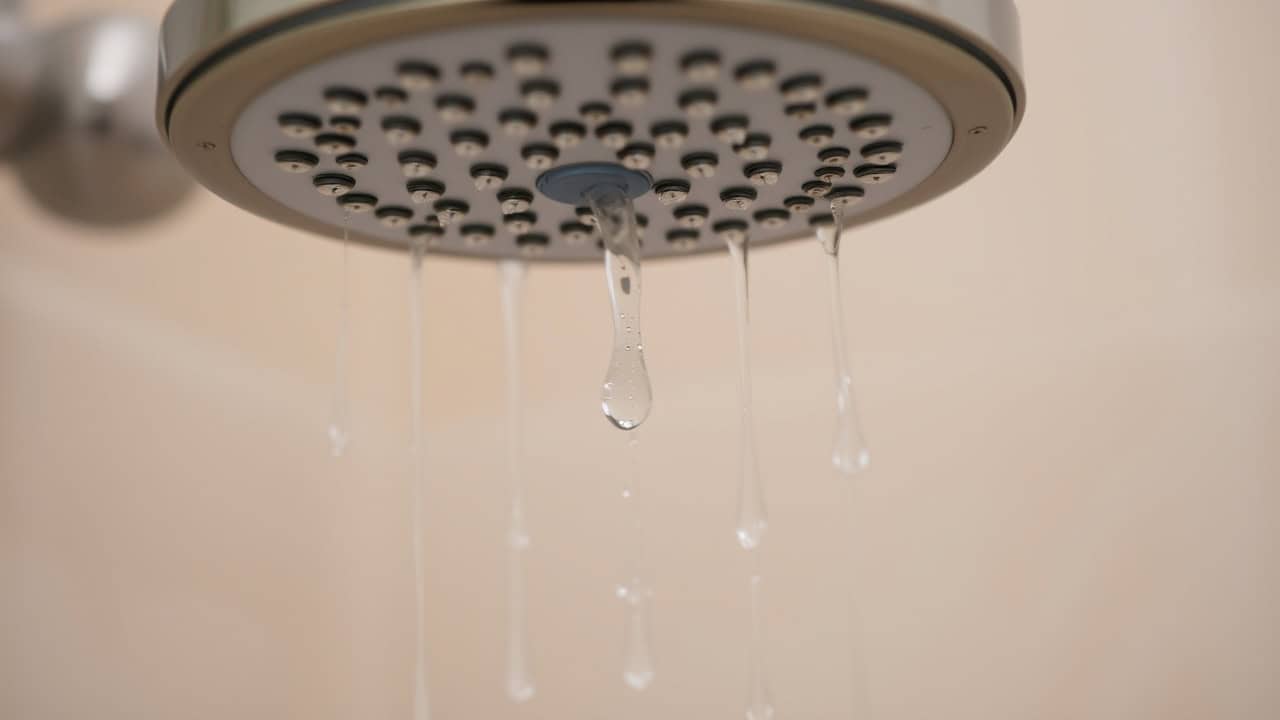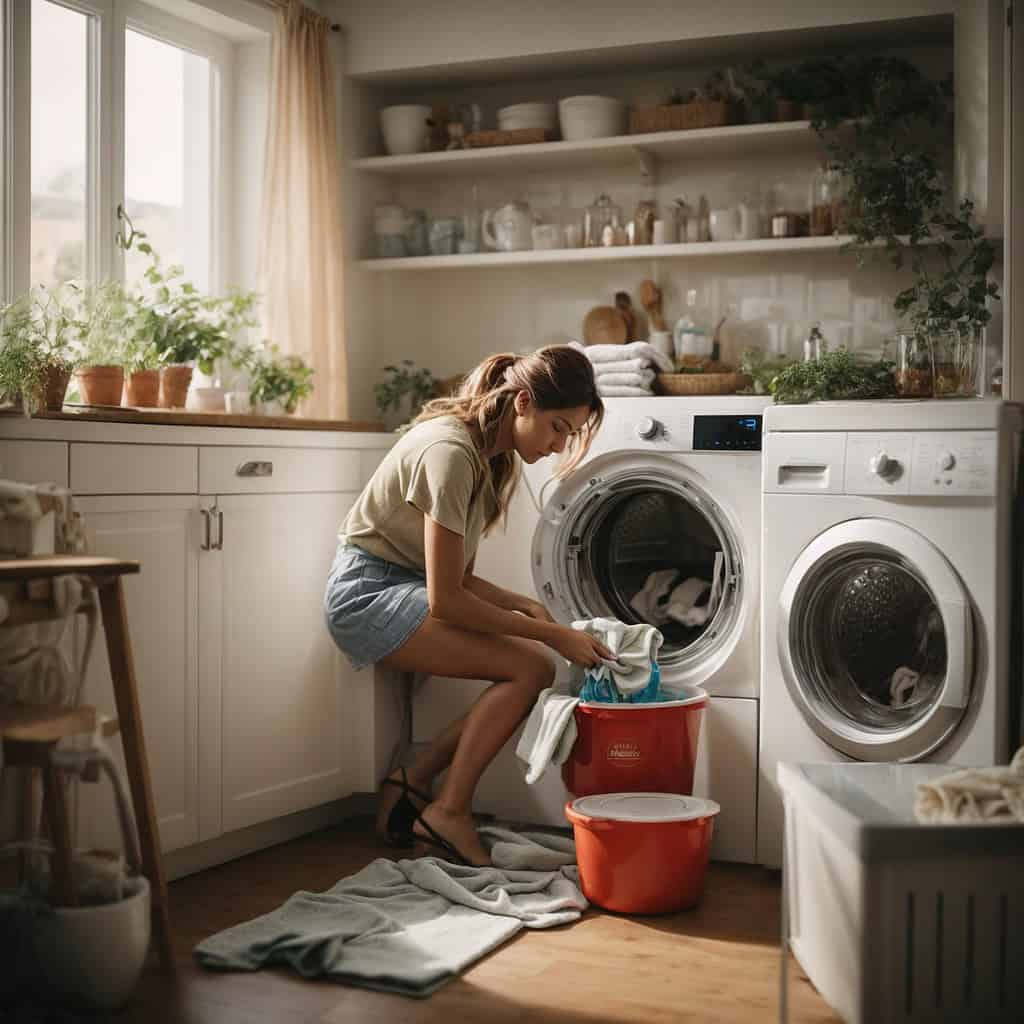 Have you ever walked into your bathroom in the morning, hoping for a quick and refreshing shower, only to be greeted by the incessant drip-drip-drip of a leaky showerhead?
Have you ever walked into your bathroom in the morning, hoping for a quick and refreshing shower, only to be greeted by the incessant drip-drip-drip of a leaky showerhead?
You’re not alone.
In fact, a study by the Environmental Protection Agency reveals that household leaks waste nearly 1 trillion gallons of water annually nationwide, with leaky showerheads contributing significantly to this staggering figure.
But here’s the kicker: did you know that fixing a leaky showerhead could save you up to 3,000 gallons of water per year? That’s enough to fill a small swimming pool!
Causes of a Leaky Showerhead
Ever wondered why your showerhead suddenly started dripping? Understanding the common causes can help you diagnose and fix the issue more effectively. This section will explore the usual suspects behind this annoying problem and offer practical advice on how to address them.
Loose Connections
Have you noticed your showerhead wobbling slightly? This could be a sign of loose connections. Over time, the vibrations from your water pressure or regular use can loosen the connections between your showerhead and the shower arm, or even within the showerhead itself. A loose connection creates tiny gaps where water can escape, resulting in those pesky drips.
Think of it like your garden hose – you wouldn’t want it spraying water everywhere because the connector to the tap is loose. A simple tightening might be all you need to stop the leak. However, be careful not to overtighten, as this can damage the threads or cause other components to crack.
Worn-out Washers or O-rings
Washers and O-rings are the unsung heroes of your showerhead. These small rubber or silicone components create a watertight seal, preventing leaks. They act like little watertight seals within your showerhead, doing the essential job of stopping water from escaping.
However, they don’t last forever. Hot water, mineral deposits, and regular use can cause these parts to wear out or become brittle over time.
When washers or O-rings fail, water finds its way through the gaps, leading to leaks. The good news? Replacing these parts is usually a quick and inexpensive fix.
Keep a small stock of various sizes of washers and O-rings in your toolkit. This way, you’ll always be prepared for a quick fix!
Here’s a handy table showing the typical lifespan of different washer and O-ring materials:
| Material | Average Lifespan |
|---|---|
| Rubber | 3-5 years |
| Silicone | 5-10 years |
| EPDM | 10-15 years |
Mineral Buildup
Do you live in an area with hard water? If so, mineral buildup could be the sneaky culprit behind your leaky showerhead. Hard water contains high levels of minerals like calcium and magnesium. These minerals can accumulate in your showerhead over time, clogging the nozzles and disrupting the water flow.
When mineral deposits block the normal water pathways, pressure builds up inside the showerhead. This increased pressure can force water out through small gaps or worn seals, causing leaks. Regular cleaning can prevent this issue and extend the life of your showerhead. Try this DIY cleaning solution: mix equal parts white vinegar and water, then soak your showerhead in the mixture for a few hours. You’ll be amazed at how much buildup comes off!
Addressing these issues promptly not only stops the annoying drip but also prevents water waste and potential damage to your bathroom. Stay vigilant and you should see your water bill coming down.
Quick & Easy Guide for Fixing a Leaky Showerhead
When you’ve identified the cause of your leaky showerhead, it’s time to take action. In many cases, you can fix the problem yourself with a few simple tools and a bit of know-how. This quick and easy DIY guide will help you tackle those annoying drips head-on.
Read the step-by-step guide below this section if you need a more detailed breakdown of the steps. 🧐
Tightening Loose Connections
One of the most common causes of a leaky showerhead is a loose connection between the showerhead and the shower arm. Over time, these connections can loosen due to vibrations and regular use, allowing water to escape. Fortunately, tightening these connections is a straightforward process that requires only a few tools.
To start, grab an adjustable wrench and a soft cloth. The cloth will help protect the finish of your showerhead and shower arm from scratches. Gently wrap the cloth around the connection point and use the wrench to tighten the showerhead clockwise until it’s snug. Be careful not to overtighten, as this can damage the components or cause leaks in other areas.
| Tool | Purpose |
|---|---|
| Adjustable wrench | Tightens the connection between the showerhead and shower arm |
| Soft cloth | Protects the finish of the showerhead and shower arm from scratches |
Replacing Washers and O-rings
If tightening the connections doesn’t solve your leaky showerhead problem, the issue may lie with the washers or O-rings inside the showerhead. These small rubber components create a watertight seal, but they can deteriorate over time due to exposure to water, chemicals, and temperature fluctuations.
To replace the washers and O-rings, start by removing the showerhead from the shower arm. Most showerheads unscrew counterclockwise, but some may have a small set screw that needs to be loosened first. Once the showerhead is removed, locate the rubber washers and O-rings inside. Carefully remove the old components and take them to your local hardware store to find exact replacements.
Before installing the new washers and O-rings, clean the inside of the showerhead and the threads on the shower arm to remove any debris or mineral buildup. Place the new components in their designated spots and reassemble the showerhead. Tighten the connection with your wrench and cloth, and test the showerhead to ensure the leak is gone.
| Component | Purpose |
|---|---|
| Rubber washers | Create a watertight seal between the showerhead and shower arm |
| O-rings | Provide a secondary seal and help prevent leaks |
Once you follow these simple DIY solutions, you can often fix a leaky showerhead without the need for professional assistance. However, if you’re unsure about any step in the process or encounter a more complex issue, don’t hesitate to call in a licensed plumber to help you resolve the problem safely and effectively.
Step-by-Step Guide to Fixing the Leaky Showerhead
This step-by-step guide will walk you through the process of repairing your showerhead. Depending on the severity of the issue, you may need to either clean or replace the showerhead.
Additionally, if you suspect a faulty shower faucet cartridge is causing the leak, we’ll provide instructions on how to replace it.
Follow these steps carefully and you’ll have a fully functioning showerhead in no time. 💪🏼
Essential Tools and Materials for Repairing a Leaking Showerhead
To successfully repair a leaking showerhead, you’ll need the right tools and materials. Below is a comprehensive list of essential tools and materials for repairing a leaking showerhead:
| Tools | Materials |
|---|---|
|
|
By having these tools and materials ready, you’ll be well-prepared to tackle your leaky showerhead. Whether it’s tightening a loose connection, replacing worn-out parts, or cleaning built-up deposits, having the right tools and materials at hand will ensure a successful repair.
Remember to follow the manufacturer’s instructions and take necessary safety precautions when working with plumbing fixtures. With the proper tools and materials, you’ll be able to fix your leaking showerhead and enjoy a refreshing and leak-free shower experience once again.
Cleaning or Replacing the Showerhead
To start, determine if your showerhead can be salvaged with a good cleaning. Over time, mineral deposits and debris can build up and clog the showerhead, causing leaks. Follow these steps to effectively clean your showerhead:
- Remove the showerhead from the shower arm by twisting it counterclockwise.
- Soak the showerhead in a bowl or container filled with equal parts white vinegar and water for at least an hour. This will help dissolve the mineral deposits.
- After soaking, scrub the showerhead with a toothbrush or a small brush to remove any remaining deposits.
- Rinse the showerhead thoroughly with water to ensure all debris and vinegar residue are removed.
- Reattach the showerhead to the shower arm, making sure it is securely tightened.
If cleaning the showerhead doesn’t resolve the leak, it may be necessary to replace it. Follow these steps to replace your showerhead:
- Turn off the water supply to the shower by closing the shutoff valves.
- Use a wrench to loosen the nut connecting the showerhead to the shower arm. Turn it counterclockwise until the showerhead can be easily removed.
- Remove the old showerhead and clean any debris from the shower arm.
- Apply a layer of plumber’s tape to the threads of the shower arm to ensure a watertight seal.
- Attach the new showerhead to the shower arm, tightening the nut clockwise by hand and then using a wrench to secure it further.
- Turn on the water supply and test the showerhead for any leaks. If necessary, use the wrench to tighten the nut a bit more.
Replacing a Faulty Shower Faucet Cartridge
If you’ve ruled out the showerhead as the source of the leak, a faulty shower faucet cartridge could be to blame. Follow these steps to replace the cartridge:
- Turn off the water supply to the shower by closing the shutoff valves.
- Remove the handle of the shower faucet by prying off the decorative cap and unscrewing the handle screw.
- Use pliers or an adjustable wrench to remove the retaining nut that holds the cartridge in place. Turn it counterclockwise until it can be easily removed.
- Take out the old cartridge and replace it with a new one of the same make and model.
- Reassemble the faucet by following the previous steps in reverse order.
- Turn on the water supply and test the showerhead for any leaks. If necessary, tighten the retaining nut a bit more.
This comprehensive guide should help you successfully fix your leaky showerhead.
Remember to always follow safety precautions and consult a professional if you encounter any difficulties or are unsure about your abilities to handle the repairs.
When to Call a Professional Plumber
While many leaky showerhead issues can be resolved with simple DIY solutions, there are times when calling a professional plumber is the best course of action. It’s essential to recognize the signs of a more serious problem to avoid causing further damage or wasting time and money on ineffective repairs.
One red flag to watch out for is if you notice water leaking from the base of the shower arm or the wall behind the shower. This could indicate a problem with the pipes or the valve inside the wall, which requires specialized tools and expertise to fix properly.
Attempting to repair these issues yourself could lead to more extensive damage and costly repairs down the line.
Another situation that warrants professional assistance is if you’ve tried the DIY solutions mentioned earlier, but the leaky showerhead persists.
A licensed plumber has the knowledge and experience to diagnose the issue accurately and recommend the most effective solution. They can also identify any underlying problems that may be contributing to the leak, such as corrosion or improper installation.
| Situation | Action |
|---|---|
| Water leaking from the base of the shower arm or wall | Call a professional plumber |
| DIY solutions don’t fix the leaky showerhead | Call a professional plumber |
| Visible corrosion or damage to the showerhead or shower arm | Call a professional plumber |
When you do decide to call a plumber, be sure to choose a reputable, licensed professional. Check online reviews and ask for recommendations from friends or family members who have had similar work done.
A skilled plumber will not only fix your leaky showerhead but also provide valuable advice on how to maintain your bathroom fixtures to prevent future issues.
Remember, while it may be tempting to tackle every bathroom maintenance issue yourself, knowing when to call in a professional can save you time, money, and headaches in the long run. By addressing leaky showerheads and other plumbing problems promptly and appropriately, you can ensure that your bathroom remains a functional and enjoyable space for years to come.
Preventing Future Leaks
While fixing a leaky showerhead is essential, it’s equally important to take steps to prevent future leaks from occurring. By implementing a few simple preventive measures, you can save yourself time, money, and the hassle of dealing with recurring leaks.
Let’s explore some key strategies for keeping your showerhead in top condition.
Regular Maintenance
One of the most effective ways to prevent leaky showerheads is to perform regular maintenance. This involves periodically inspecting your showerhead and its components for signs of wear, damage, or mineral buildup.
Make a habit of checking for leaks, tightening connections, and cleaning the showerhead every few months.
To clean your showerhead, start by removing it from the shower arm and soaking it in a mixture of equal parts white vinegar and water for several hours. This will help dissolve any mineral deposits that can clog the nozzles and contribute to leaks.
After soaking, use an old toothbrush to gently scrub away any remaining debris and rinse the showerhead thoroughly before reattaching it.
| Maintenance Task | Frequency |
|---|---|
| Inspect for leaks and damage | Every 3 months |
| Tighten connections | Every 3 months |
| Clean showerhead with vinegar solution | Every 6 months |
Investing in Quality Showerheads
Another key factor in preventing leaky showerheads is investing in high-quality fixtures.
While it may be tempting to opt for the cheapest option available, low-quality showerheads are more prone to leaks, corrosion, and other issues. By spending a bit more upfront on a well-made showerhead from a reputable brand, you can save yourself the headache of frequent repairs and replacements.
When shopping for a new showerhead, look for features like solid metal construction, durable finishes, and high-quality internal components. Some showerheads even come with built-in filters or anti-clog nozzles that can help reduce mineral buildup and extend the life of the fixture.
Don’t forget to read reviews from other customers to get a sense of the showerhead’s performance and reliability.
| Feature | Benefit |
|---|---|
| Solid metal construction | Durability and longevity |
| High-quality internal components | Reduced risk of leaks and malfunctions |
| Built-in filters or anti-clog nozzles | Minimizes mineral buildup and extends showerhead life |
Addressing Water Quality Issues
Finally, it’s crucial to consider the quality of your home’s water supply when it comes to preventing leaky showerheads. Hard water, which contains high levels of minerals like calcium and magnesium, can accelerate the buildup of deposits in your showerhead and lead to leaks and other problems.
If you live in an area with hard water, consider installing a water softener or whole-house filtration system to remove excess minerals from your water supply.
These systems can help extend the life of your plumbing fixtures, including your showerhead, and improve the overall quality of your water.
By taking a proactive approach to showerhead maintenance and investing in quality fixtures and water treatment solutions, you can significantly reduce the risk of leaky showerheads and enjoy a more reliable, enjoyable showering experience for years to come.
Summing up
A leaky showerhead might seem like just a minor annoyance, but it can have a significant impact on your water usage, utility bills, and overall bathroom experience. Understanding the common causes like loose connections, worn-out washers and O-rings, and mineral buildup, empowers you to take effective measures.
Simple DIY solutions, such as tightening connections and replacing worn components, can often resolve the issue. However, recognize when it’s time to call a professional plumber, especially for leaks at the shower arm base or persistent drips despite your efforts.
Proactive maintenance is key. Regularly inspect your showerhead for damage, tighten connections, and clean to remove mineral deposits. Investing in high-quality fixtures and addressing water quality, particularly hard water, will help prevent future leaks. By being proactive and diligent in maintaining your showerhead, you contribute to water conservation, save money, and prolong the life of your bathroom fixtures.
So, the next time you notice a drip, take action and enjoy a more efficient, enjoyable shower experience.

Dave Johnson is a mechanical engineer with over two decades of experience in the semiconductor industry. He’s known for his exceptional ability to fix almost any mechanical and electronic device, from leaking faucets to lawnmowers – he is definitely your go-to neighbor for household maintenance issues. When he’s not elbow-deep in his garage doing household repairs, you’ll find him sharing his expertise on fixing everyday maintenance challenges on this site.


